
How To Optimize Amazon Product Descriptions: A Complete Guide


For e-commerce companies, selling on Amazon’s marketplace is an absolute must; however, getting your product to rank first in customer searches requires the optimization of your Amazon product descriptions.
Why Is Optimizing Amazon Product Descriptions Important?
As of June 2017, Amazon had a total of 398,040,250 products in their marketplace…. holy cow!
Products
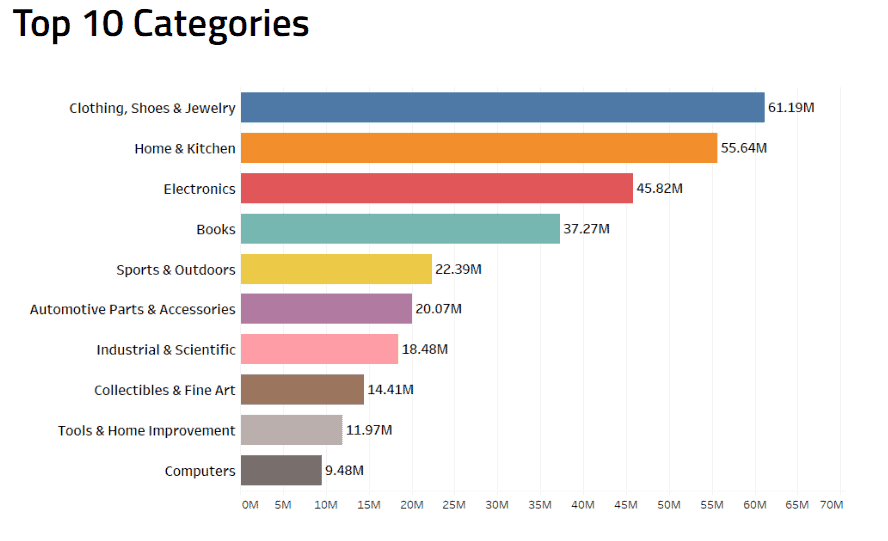
There Is a ‘Wrong Way’ To Do It
Unlike other marketplaces, Amazon has a very specific way that they would like your product descriptions to be written and formatted so that they utilize all of the parts of its internal searching algorithm. This makes it incredibly important that you optimize your Amazon product descriptions correctly in order to help your products rank higher than your competitors.
The sad truth is that most sellers don’t optimize their Amazon descriptions. Instead, they do the following HUGE uh-ohs:
Let’s go section by section and show you how this should be done.
Understanding the Amazon Description Sections and Components
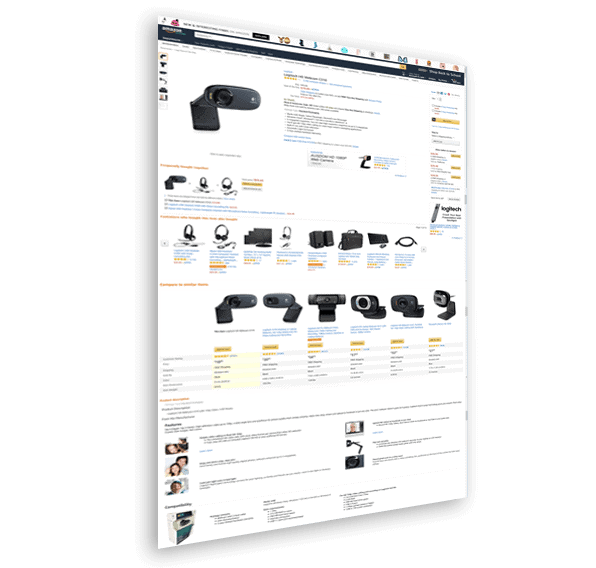
This format includes:
- Title (200 Characters)
- Features (500 Characters)
- Descriptions (2,000 Characters)
Each section is limited to a character count, so it is very important to know what Amazon is looking for in each section to get the best use of the characters you choose.
Section 1 – Product Title
With the way that Amazon’s internal search engine works, each individual word in the Product Title is searchable on its own. Amazon has also restricted Product Titles to only 200 characters. While this is more than what Walmart descriptions give you, this means that knowing what to put in this section becomes incredibly important, as you have limited real estate.
Giving your customers as much information as possible within this character count is key.
Characters
For example:
Laura Ashely Sophia Collection 300-Thread-Count Pillow Cases (Blue, Queen, Set of 2) is better than Blue Pillow Cases.
The reason being is that the first title gives the following information to the user:
- Brand – Laura Ashley
- Product line – Sophia Collection
- Material or key feature – 300-Thread-Count
- Product Type – Pillow Cases
- Color – Blue
- Size – Queen
- Packaging/Quantity – Set of 2
Product Title Formula
To give you an idea of what formulas work best for each industry, here are a few examples from Tara Johnson from CPC Strategy. Please note this does not include ALL categories and their specific formulas, but this should help you know what Amazon is looking for.
Cookware, Cutlery
Style: Brand + Line + Size + Product Type
Example: Calphalon Professional Hard-Anodized 8-1/2-Quart Saucier with Lid
Example: Sabatier Precision 14-Piece Stainless-Steel Knife Block Set
Cook’s Tools & Gadgets
Style: Brand (+ Model Number if necessary) + Model Name + Product Type, Color
Example: Vacu Vin Wine Saver Gift Pack, White
Small Appliances, Home Environment
Style: Brand + Model Number + Model Name + Product Type, Color
Example: KitchenAid KSM150PSER Artisan 5-Quart Mixer, Empire Red
Tableware
Style for Sets: Brand + Pattern + Product Type, Amount
Example: Pfaltzgraff Charlotte 16-Piece Dinnerware Set, Service for 4
Bedding
Style for Sheets, Mattress Pads, Blankets: Brand + Line/Pattern + Thread Count + Material + Size + Product Type, Color
Example: Wamsutta Luxury 400-Thread-Count Sateen Queen Sheet Set, Halo
Bath Towels
Style: Brand + Line/Pattern + Material + Product Type + Quantity, Color
Example: Royal Velvet Classic Hand Towel, Peridot
DVD Players
Style: Brand + Model Number + Size + Product Type + Screen Style (if needed) + (Color/Pack Size)
Example: Panasonic PV-D4743S Progressive Scan DVD/VCR Combo (Silver)
Video Games
Style: Brand + (Model Number if unclear what product is) + Product Type + (Platform)
Example: Thrustmaster Freestyler Bike (PC)
Optimization Tip – Title Formula
If you aren’t sure of the right order for putting information into the title, here’s a winning formula that works for many top sellers:
[Brand + Model Number + Model Name + Product Type, Color, Set Information]
This format should help you to naturally include all of the information you need to create a good, searchable title.
Do’s and Don’ts
Here is a list of Amazon particulars from their Quick Start Style Guide in regards to Product Titles:
- Capitalize the first letter of each word.
- Do not capitalize conjunctions (and, or, for), articles (the, a, an), or prepositions with fewer than five letters (in, on, over, with).
- Use numerals (2 instead of two).
- State the number of items in a bundled product (pack of 10).
- Keep it under 200 characters, but make sure to include critical information.
- Use only standard text, since special characters or symbols like © will not display in the title.
- Do not include price and quantity.
- Do not use ALL CAPS.
- Do not include information about yourself or your company. If you own a brand, put your brand information in the brand field.
- Do not include promotional messages, such as “sale” or “free shipping.”
- Use your seller name as the Brand or Manufacturer only if your product is Private label.
- Do not include subjective commentary, such as “Hot Item,” or “Best Seller.”
Use Your Characters!
Using as many of the 200 characters as you can while still being concise and clear does seem to make a difference with how products rank. In the example below, you’ll notice that the products with keyword-rich titles are outranking those that are more simplistic.
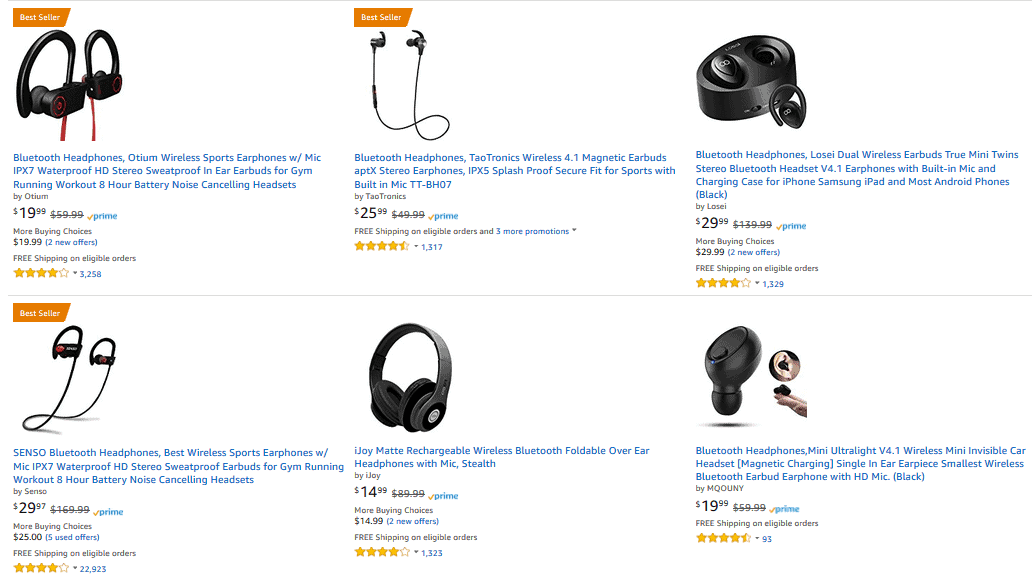
Section 2 – Key Features
Amazon has come right out and said that this section should be made up of five bullet points and should not exceed 500 characters. This means you should utilize 100 characters for each bullet point in this section of your Amazon product description.
Characters
Do’s and Don’ts
- Highlight five features you want customers to consider, such as dimensions, age appropriateness, country of origin, warranty information, etc.
- Begin each bullet point with a capital letter.
- Write each bullet point in fragments and do not include ending punctuation.
- Write all numbers as numerals.
- Separate phrases in one bullet with semicolons.
- Spell out measurements, such as quart, inch, or feet.
- Do not use hyphens, symbols, periods, or exclamation points.
- Do not write vague statements; be as specific as possible with features and attributes.
- Do not enter company-specific information; this section is for product features only.
- Do not include promotional and pricing information.
- Do not include shipping or company information – this is prohibited.
Optimization Tip – Fragmenting Is Good
Unlike Google, Amazon will not penalize you for fragmented sentences or lack of punctuation. In fact, that’s exactly how they want it! Make sure to fragment within your bullets, separating features with commas or semicolons.
Punctuation and proper grammar use up precious characters. Here are a few examples of how to properly create the features section for optimal results:
Good Example
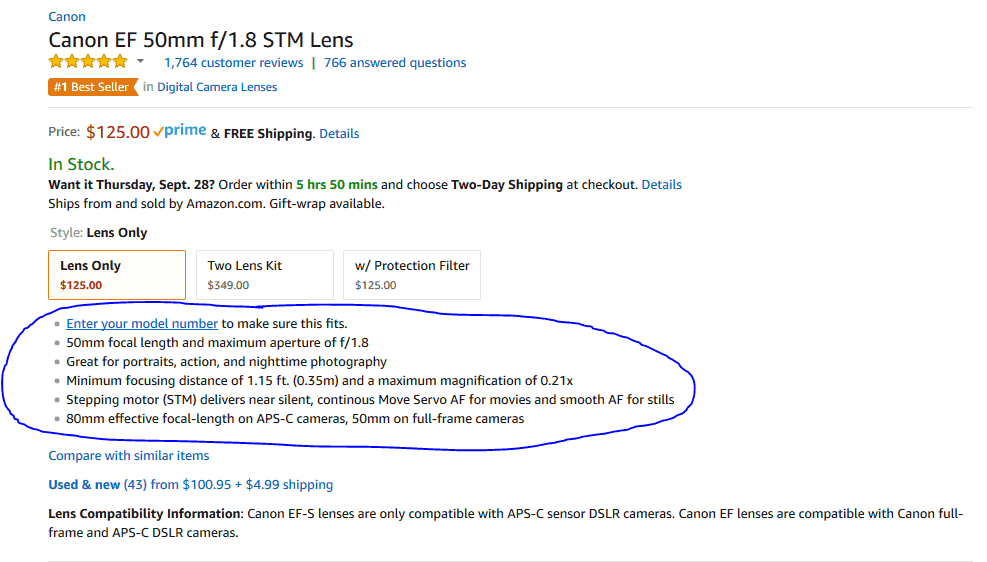
Why It’s Good – The seller is able to pack in more thoughts, uses, and important information by breaking up features with commas. They also are utilizing a feature/benefit model of writing. Stating the feature, then listing the benefit to the consumer.
Now let’s take a look at a bad example:
Bad Example
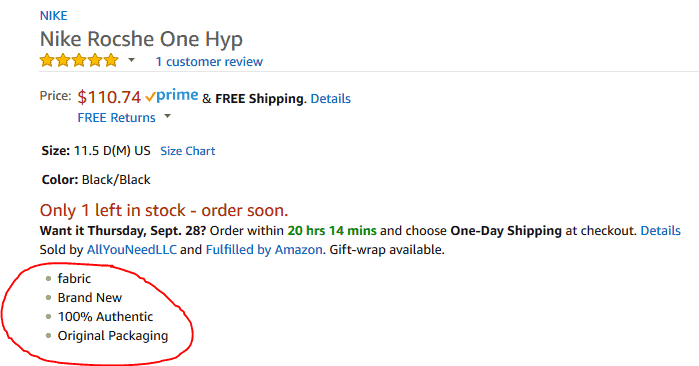
Why It’s Bad – While this description is simple, the seller is missing out on valuable real estate that could be used with keyword-rich features to help increase search relevancy. There is no feature-benefit explanation here, which doesn’t help convert prospects into customers.
What if my Product Lacks Features?
If you have a product like a ketchup packet or something that is comparably simplistic, it can be difficult to think of enough features to create five bullet points.
In situations like these, try to use all five bullet points, even if each bullet is only a word or two. Also, make sure that the bullets utilize keyword-rich text as this features section is weighted more heavily by Amazon’s search engine.
Section 3 – Product Description
This is the last and final section that Amazon gives you as part of your product description. The requirements allow you to fill up to 2,000 characters in this space, but unlike the other two sections, it is not considered required.
Characters
Branding Opportunity
Since the title and features sections require fragmented text, this description section is the place to really “speak” to your customer. Make sure to use this opportunity to share your brand’s voice, tone, and personality through the text.
Similar to a traditional landing page, think of this as being your hero text. It should be well written with easy-to-read headers and clear and concise language.
If this is something you struggle doing or don’t have the time to do, we can absolutely help you, as this is our specialty.
Do’s and Don’ts
- Describe the major product features, such as size, style, and what the product can be used for.
- Include accurate dimensions, care instructions, and warranty information.
- Use correct grammar, punctuation, and complete sentences.
- Do not include seller name, e-mail address, website URL, company-specific information, details about another product you sell or promotional language such as “SALE” or “free shipping.”
Optimization Tip – Explain Away!
This section is still technically searchable by Amazon and therefore important when it comes to what you put here.
Make sure to use correct grammar and punctuation in this section, and employ keyword-rich headers and copy to describe your product in detail to give the customer everything they need to know.
Here is an example of a simple, well-done description:
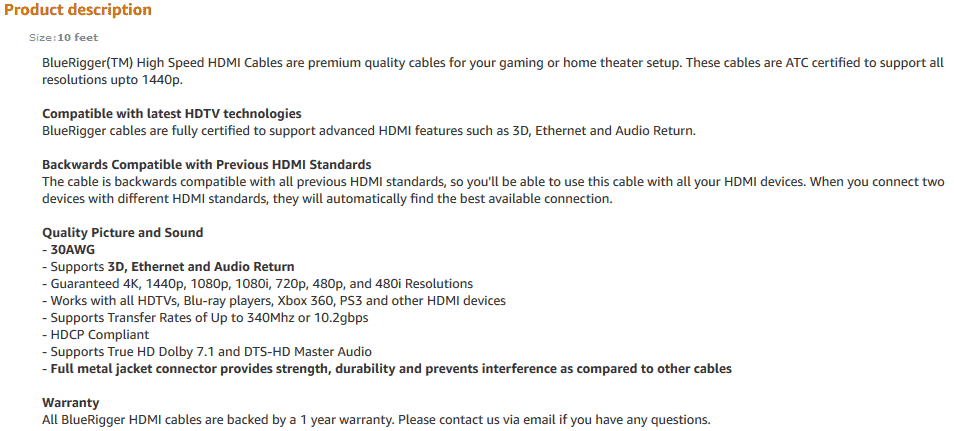
Component – Keywords
Thankfully, Amazon does not have any specifics that would make keyword research any different than how you would research keywords for Google.
We have a great write-up on keyword research that you can check out, but basically, it’s all about understanding what other search terms your customers might type in aside from the main product name.
There are several tools to help you research keywords, such as SEMrush (you can save 20% on this with BKA) or the Google Adwords Keyword Planner, to name a few. Another simple tactic is to conduct Amazon searches for similar products in your space and see what keywords your competitors are using.
Once you have a solid list of keywords for your products, you can then make sure that they find a place in the Features and Description sections to ensure optimization.
Hidden Keywords
Amazon’s marketplace does give you the ability to add hidden keywords for a product.
What are hidden keywords? – Basically, these are additional meta tags that you can add to your listing with relateable words that would help a user find your listing. The trick here is not to include keywords or terms that you have already put in the title or benefits sections.
Specifications:
- Amazon gives you 5 form boxes to input these terms
- Amazon allows up to 250 characters total for all 5 form boxes combined
These fields are not required when posting your listing, but can be used to help give you an edge.
Amazon has provided the following guidance if you decide to use this feature:
- Don’t include product identifiers such as brand names, product names, compatible product names, ASINs, UPC codes, etc.
- Don’t provide inaccurate, misleading, or irrelevant information such as the wrong product category, the wrong gender, out-of-context words, etc.
- Don’t provide excessively long content. Respect the limits that are set for different fields.
- When entering several words as a search term, put them in the most logical order. A customer is more likely to search for stuffed teddy bears than for teddy stuffed bears.
- Use a single space to separate keywords. No commas, semicolons, or carets are required.
- Don’t include statements that are only temporarily true, e.g., “new,” “on sale,” “available now.”
- Don’t include subjective claims such as “amazing,” “good quality,” etc., as most customers don’t use subjective terms in their queries.
- Don’t include common misspellings of the product name. Amazon’s search engine compensates for common customer misspellings and also offers corrective suggestions.
- Don’t provide variants of spacing, punctuation, capitalization, and pluralization (“80GB” and “80 GB,” “computer” and “computers,” etc.). The search engine automatically includes different case forms, word forms, and spelling variants for searching.
- Don’t include terms that are abusive or offensive in nature.
- Abbreviations, alternate names, topic (for books, etc.), and key character (for books, movies, etc.) could be included as keywords.
Here are some examples of bad keywords:
| Product | Unacceptable keywords | Reason |
|---|---|---|
| Diamond Flower 14k White Gold Ring | Gold, ring | Keywords provide duplicate information that is already covered in the product name. |
| Nike running shoes | Nike | Keyword is a product identifier. |
| Hermes handbag | Gucci, Coach, Michael Kors | Keywords are product identifiers and provide inaccurate information. |
| Popcorn Maker | Ice cream, cones, bakery, obama, etc. | Keywords contain irrelevant or unrelated popular terms. |
| Wood Bamboo Temple Wayfarer Sunglasses Green Frame | amazing, good quality, trendy fashion 2014, best seller, etc. | Keywords contain subjective information. |
| Colors of India | Color, color, Colors, colors, etc. | Different word forms that search engine automatically accounts for. |
| MS-305S Portable Mini-Speaker | MS-305-S, MS305S, etc. | Keywords are product identifiers and the search engine automatically accounts for punctuation variants. |
Here are some examples of good keywords:
| Product | Acceptable keywords | Reason |
|---|---|---|
| Lord of the Rings | lotr | Customers might use famous abbreviations to search for books, movies, etc. |
| TON 3057 20-oz. Jacketed Fiberglass Claw Hammer | nail pounder, nail puller, ripping tool | Customers might use alternate names to search for products. |
| 2015 Fox Racing 180 Drezden Pants | Racewear, motocross gear | Customers might use alternate names to search for products. |
| The Shadow Beast (An Adventure in Time) | Time travel | Customers search by topic to find relevant books, etc. |
Optimization Round Up
Now that we’ve gone through each section of the format of Amazon’s product descriptions, let’s recap how to optimize them.
Title
Features
Description
Conclusion
As you can see, ranking on Amazon is different from ranking on Google as far as how to structure and format your content.
Having Amazon Product Descriptions that utilize these optimization techniques is critical when it comes to helping your products sell and rank on Amazon’s marketplace.
Need Help Writing Amazon Product Descriptions?
- The Google Quick Answer Box: What, Why and How? - December 20, 2023
- Top 10 Link-Building Strategies for Content Marketers - July 12, 2023
- 8 Types of Ecommerce Content You Should Start Using - May 15, 2023

Very informative. Thank you so much for taking us through the whole process.
As we also provide Amazon seller services, this blog really came handy. Thank you.
Regards
I really love this article because it contains all widely used and important things